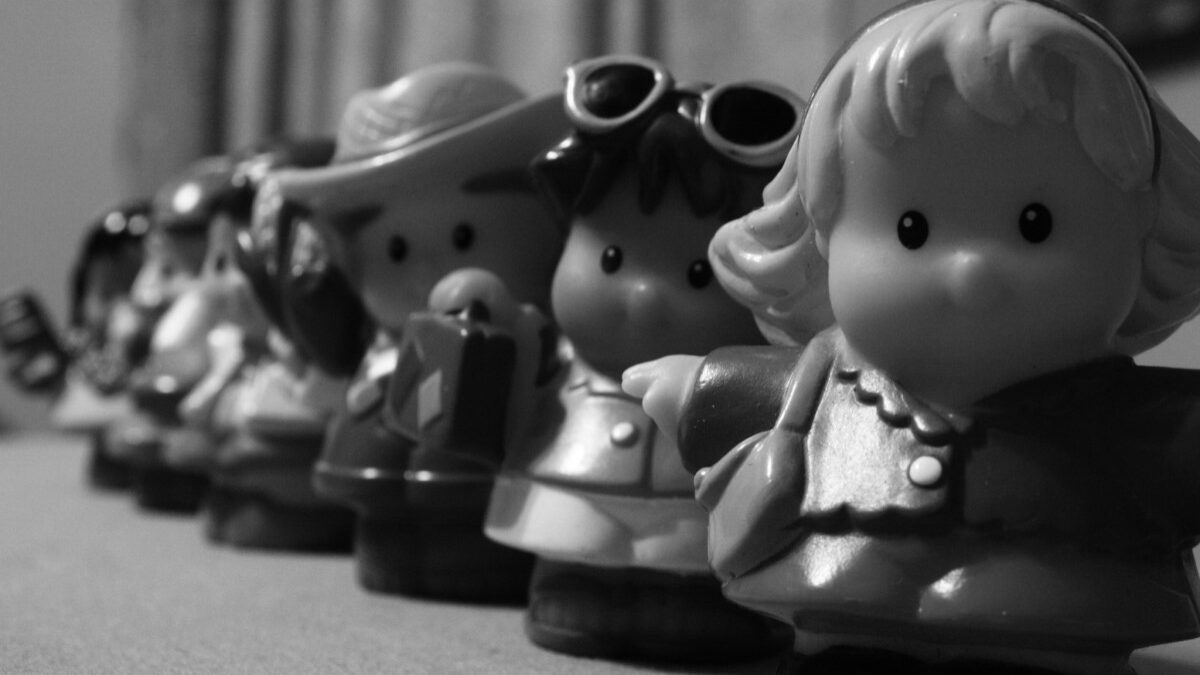The following is an excerpt from the author’s new book, “The Weaponization of Loneliness: How Tyrants Stoke Our Terror of Isolation to Silence, Divide, and Conquer.” (Bombardier Books, Post Hill Press.)
As social wounds fester, identity politics spawns social distrust and dysfunction. Political correctness cuts us off even further from open conversation with others. The agitation of mobs intimidates people into greater isolation. All these processes erode civility and grow the worst primitive instincts in people.
These mechanisms promote the narrative that revenge is justified. And, voilà, a mob can be mobilized by stimulating that destructive passion. The mob can now dish out punishment to anyone associated with the offending act, no longer to individuals who are guilty as charged according to a rule of law and due process. While identity politics segregates blacks by constantly reminding them of former oppressions, it aims to humiliate “whites” by constantly accusing them of their presumed ancestors’ role, demonizing them for things they did not do themselves.
Many willingly accept the punishment since the propaganda maintains an illusion of majority opinion. This seems to be a weakness of the so-called white demographic, particularly those in well-to-do suburbs. Working-class whites have had a lot more activist venom directed at them in recent years because of their association with populism and the 2016 presidential campaign during which Hillary Clinton labeled them a “basket of deplorables.”
Constant propaganda that threatens to mark whites as domestic terrorists or white supremacists takes its toll. Many become defensive and succumb to the threat rather than push back. Such were the probable internal dynamics that caused a thousand residents of an affluent white suburb to take a loyalty oath to the Black Lives Matter movement because of its superficial claims of being antiracist. Yet by doing so, they marked themselves as eternally guilty of racism by accepting the BLM definition of white.
But what comprises a white identity, anyway? Advocates of identity politics have made an industry of defining the term for us. The irony is that they use the same methods of propaganda and social pressures that advocates of Jim Crow laws used in the past to get Americans to accept racism.
A century ago, “whites” in America were viewed primarily as having a White-Anglo-Saxon-Protestant background. Back then, the demographic did not include the great waves of European immigrants who came to America in the late 19th and early 20th centuries. Those immigrants experienced much discrimination, even the pale-skinned Irish, who were often called “white-washed n-words.”
The term “white” would not have included my Southern Italian grandparents, who came to America to escape poverty. Nor would it have included my maternal grandparents, who survived the Armenian genocide in Ottoman Turkey.
But today, I’m lumped in as white simply because my grandparents’ descendants assimilated to America’s language, culture, and traditions. Or, as critical race theorists would put it, we “whitened.” And so it goes for everyone assigned as white in the critical race theory narrative. Even if you are racial non-conforming like I am, once you’re labeled “white,” nothing else about you as a person matters. Your sufferings, your personal experiences, your sense of humor and personality, and even living in an interracial family all become meaningless in that model.
And what about the term itself?” “White” is a word that’s become dangerously interchangeable with the idea of white supremacy, with Ku Klux Klan and Hitlerian implications. There are even courses and curricula of “whiteness studies,” which are extensions of African American studies. The general theory is that people who are identified as white — either by themselves or by others — enjoy unearned privileges that are hard to come by if you are nonwhite.
‘Whiteness’ Is a Code Word for Universal Values
Another puzzle on the meaning of whiteness comes from an infographic displayed in July 2020 at the Smithsonian’s National Museum of African American History. It branded universal principles of success and civil society as fundamentally white.
That list of values included self-reliance, hard work, objectivity, having a written tradition, being polite, due process in law, punctuality, delayed gratification, keeping one’s personal life private, being optimistic, and planning for the future. One section of the display even described the scientific method as a white thing. The exhibit also targeted America’s European roots, the study of Western civilization, monotheism, and traditions like celebrating Christmas.
Many saw the display as insulting to blacks because, by clear implication, it suggested they held the opposite values, such as, for example, laziness and rudeness. The exhibit, which was probably a trial balloon, lasted just a couple of days because of the public outcry. But the episode prods us to ask some deeper questions. Was its target “whiteness” per se? Or was the target actually those universal values? The latter seems far more likely.
“Whiteness” was simply the convenient smear used to taint the values themselves. But why? Because those universal values are the building blocks for strong relationships in the private sphere of life. Those are ideals that give us a sense of order rather than chaos; a sense of family rather than estrangement; traditions that preserve our cultural memory; a sense of virtue; a defense of privacy that allows for intimacy. They give us the stability to cultivate relationships that can help us partner with others against the trap of the conformity impulse.
These are all humanizing values accepted by people of goodwill. I don’t believe anyone would knowingly disparage them or erode them unless they wish to eliminate the private sphere of life and individual freedom. There’s no other logical way to interpret this odd display at the Smithsonian. It essentially puts the private sphere of life on the chopping block.
On the surface, we see some more obvious byproducts of the exercise. “White” can also be applied as a derogatory term that cultivates self-loathing among those who accept the identity. Whiteness was made the chief scalpel for vivisecting America by making it synonymous with oppression and dehumanization. Worse, it also meant a rejection of values that allow for the happiness of children — such as optimism, politeness, individualism, order, and the nuclear family. All of this obstructs civil society and atomizes us further.
Perhaps most disturbing is the attack on individualism as a white value that is racist. What, then, are Americans, white or otherwise, to do with the legacy of the civil rights movement of the 1950s and 1960s? It was steeped in the Christian ideal of seeing people as individuals made in the image of God, as noted in Rev. Martin Luther King Jr.’s “I Have a Dream” speech.
The goal was to judge people only by their character as individual human beings. But critical race theory requires us to not only prejudge people based on immutable characteristics like skin color but to also reject people as racist for seeing others as unique individuals without regard to their race. The regression is astonishing.
White activists like Robin DiAngelo got rich by pushing the narrative that being racially color-blind was a sneaky form of racism. DiAngelo tried to validate this perverse new logic by citing a black associate who said that whenever she hears a white person talk about seeing the individual rather than the race, she thinks: “This is a dangerous white person. This is a white person who is going to need to deny my reality.”
If we accept that attitude, we end up promoting a dynamic with many of the elements of a dysfunctional personal relationship, including obsessiveness, gaslighting, codependency, drama, and constant role-playing. It’s exhaustingly high maintenance. It can get so entrenched that neither party is capable of relating in any other way.
The reaction of many self-identified whites — to do exactly what the oppressed party tells them to do, no matter what — is probably more a factor of fear than guilt. In the process, however, they can end up feeling guilty as well as untethered from a sense of individual identity.
The Evolution of Self-Loathing
We should ask how these strange behaviors evolved in the so-called white demographic. The role of propaganda in both media and education is paramount. The conformity impulse is definitely at work. But there is also a lot more going on under the surface that breaks our ability to resist propaganda.
First, self-segregation is still catching up with us today. Allan Bloom understandably despaired when he noticed that college students weren’t establishing real friendships across racial lines. If such segregation hadn’t persisted, the ground for the eruption of hostilities would have been much less fertile.
There is probably also a gnawing sense of guilt about this self-segregation, especially in the affluent suburbs where a lot of whites retreated to feel safe from crime. There certainly weren’t as many middle-class blacks who could follow their lead, though those with the means often did so. But now, apparently, a social bill has come due, and power-hungry demagogues have rushed into the vacuum.
This self-segregation is real. It’s both a reflection and cause of racial tension. But conformity and compliance are due mostly to the constant propaganda barrage, especially with Big Tech’s outsized influence and censorship power in social media. Since any politically incorrect statement can result in instant social death, the effect of the propaganda is to condition us into conformity.
The great irony is that there is no war between black people and white people. That’s an illusion stoked by the propaganda machine to divide us and control our behavior. Rather, a contingent of utopian-minded elitists has targeted the white demographic for demonization. Race is a convenient hot-button issue that a minority of social engineers can use to destabilize us and then impose their views.
But most people just want to live and let live. In general, an ordinary black person just wants what every ordinary white person wants: a place of his or her own to call home; close family; satisfying friendships; good schools for their children; good cheer; and the opportunity to explore, to discover, to build, to work, and to have a purpose in life. There’s nothing supremacist about that and certainly nothing white.
I recall a quote from a Soviet dissident who described the yearning for such freedom as a desire simply to own a little plot on which to grow one’s own tomatoes. I think that sums it up.









